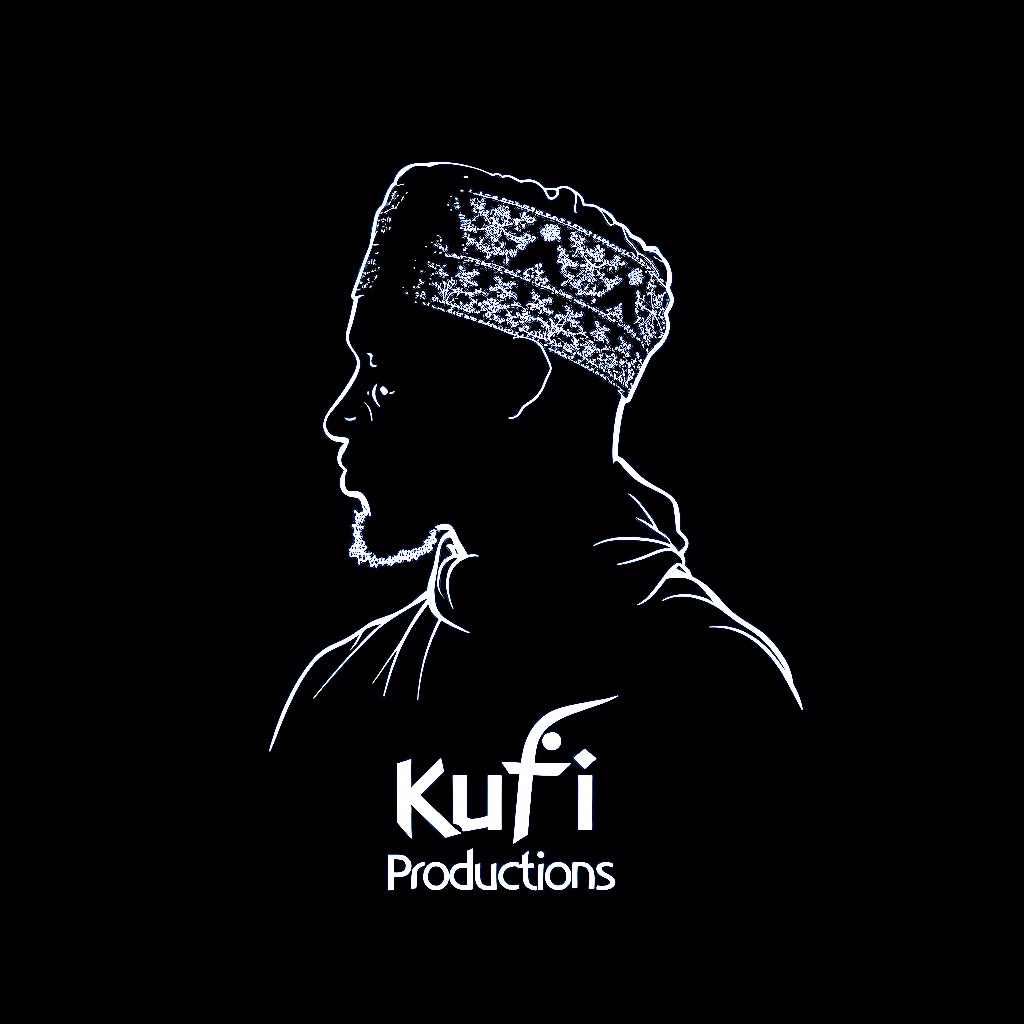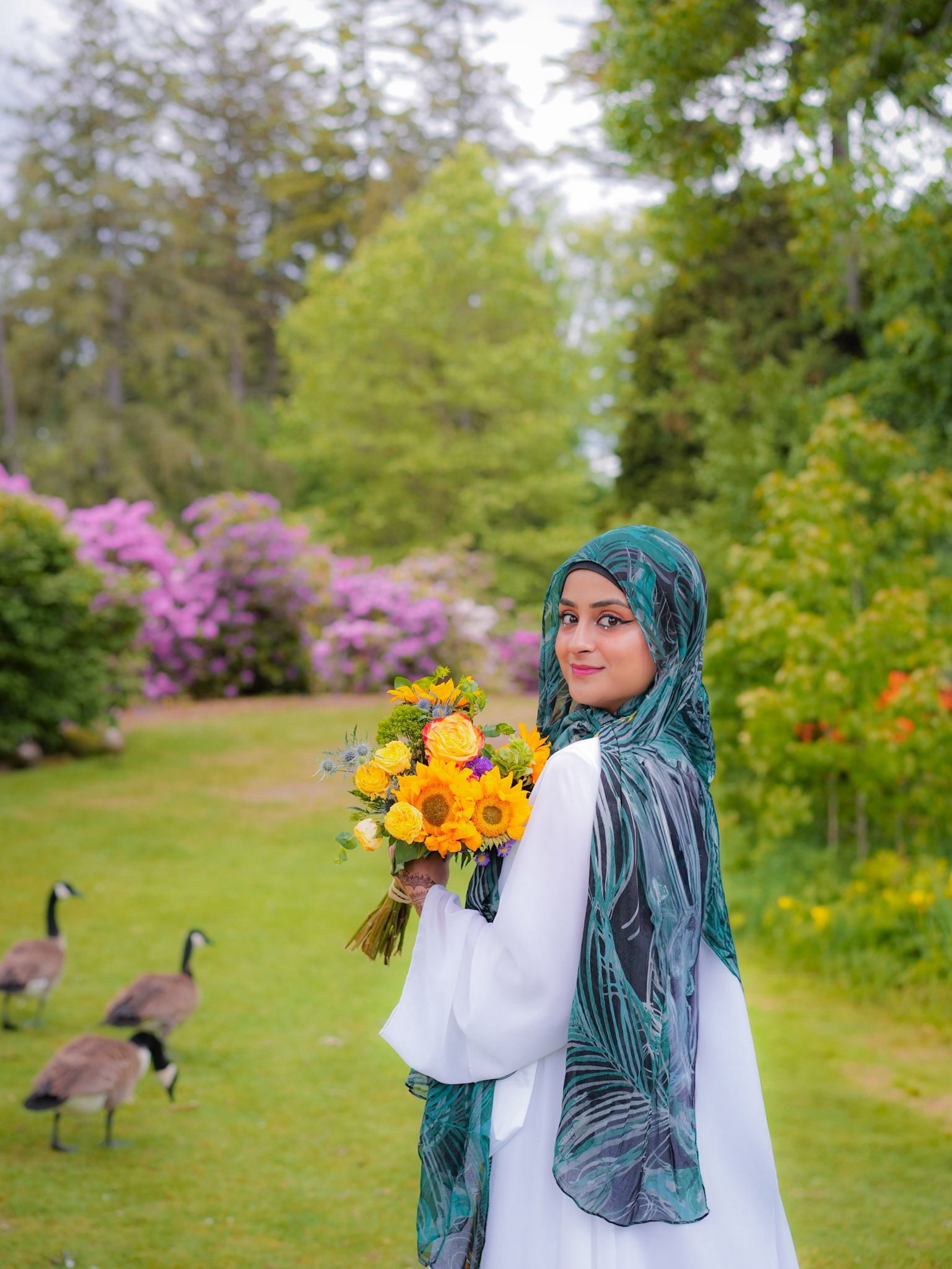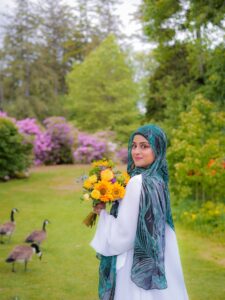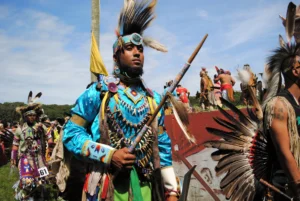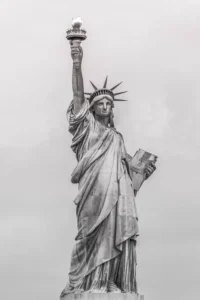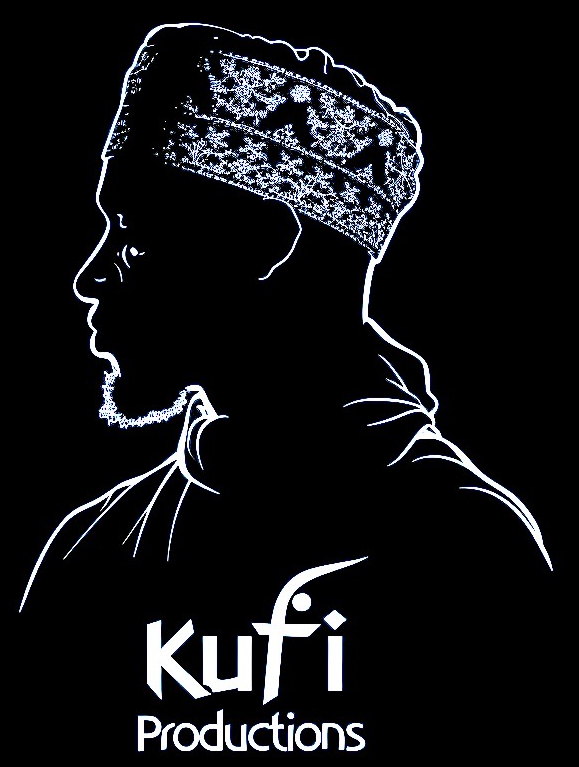What’s the story behind your creative journey? Tell us how you got started, and what moment made you realize this was your calling?
The story behind my creative journey begins in my early childhood. I’ve always been artistically driven and deeply in love with storytelling in all its forms like writing, speaking, and creating. When I was in elementary school, I used to make up stories and narrate them to my friends for fun. I remember entering every speech competition my small private Islamic school on Long Island offered, eager for the chance to express myself in front of an audience.
One specific memory stands out: I was in first or second grade when I won third place in a speech competition. Holding that small plaque in my hands felt revolutionary. It wasn’t about the placement, rather, the feeling of pride and warmth that came from sharing my words and having them resonate with others. That was the moment I realized I wanted to keep creating, communicating, and telling stories that could move people. It’s that same feeling- of taking an idea, breathing it into existence, and watching it connect with others, that continues to guide my creative path today.
How does your cultural or faith background influence your work? We’d love to hear about the unique perspective you bring to your art.
As a South Indian American Muslim, my cultural and faith background plays a deeply integral role in how I view the world and the art I create. Growing up at the intersection of two phenomally rich background, Islamic and South Asian, immersed me in beauty, rhythm, and expression from a young age.
From Arabic calligraphy to Urdu poetry, intricate beadwork on lehengas and saris to the splendid choreography of Bharatanatyam, my surroundings flourished with artistic expression. I grew up hearing the adhan echo through our home, watching Bollywood films that blended humour and heart, and seeing creativity woven into rituals like the mandalas of mehndi patterns or the craft of handmade mithai.
That tapestry of influences has shaped not only my creative style but also my purpose. Islam grounds me in intention, sincerity, and compassion, while my heritage reminds me that art is a lifeblood that sustains memory, identity, and community.
What’s a project you’re especially proud of, and why?
One project I’m especially proud of is a graduation photo series I worked on with my friend and photographer, Areej. We shot it entirely on film across various small businesses and local landmarks on Long Island that have shaped me throughout my life. Each location held personal meaning: my local library, the Jericho Cider Mill, my favorite coffee shop and flower shop, and even the Indian beauty parlour I’ve been going to since my teenage years.
I wore my graduation cap in each place, honoring not just my milestone as a college graduate but also the community that raised me. Every stop represented a piece of home, a reminder of how the people and places of Long Island have nourished my growth and creativity.
Working with film taught me to slow down and be patient as it took nearly a week to get the photos developed. The anticipation made the process all the more meaningful. Seeing the final prints felt like holding time itself, a blend of nostalgia, pride, and gratitude. It’s more than a photo series, it’s a love letter to where I come from. I’m a proud Long Islander and the finished product conveyed accomplishment, nostalgia, pride, and gratitude all at once.
If you could collaborate with any artist (living or historical) from the Muslim or ethnic diaspora, who would it be and why?
That’s a difficult question because there are so many creatives whose work deeply inspires me. From the Muslim community, the first three people who come to mind are Bisan Owda, Motaz Azaiza, and Plestia Alaqad, three Palestinian photojournalists from Gaza whose resilience and artistry have moved me profoundly since October 2023. the first three people that come to mind are Bisan Owda, Motaz Azaiza, and Plestia Alaqad, three photojournalists from Gaza who I’ve been following since October of 2023. They combine humanity, artistry, storytelling, photography, poetry, and continued existence through unbelievable horror in such a way that’s so cohesive and resilient.
From the South Asian diaspora, AR Rahman endlessly inspires me as a fellow Indian Muslim creative. His musical prowess and ability to convey emotion, nostalgia, and cultural pride across multiple languages is revolutionary. I saw him in concert for the first time back in August and it was almost a spiritual experience! Hearing “Chaiyya Chaiyya” in person is something you don’t forget.
What’s one misconception about your art form or your community that you’d like to challenge? What do you wish more people understood?
I’m in a lot of creative fields as a content creator, photojournalist, as well as a political analyst, poet, public speaker, activist, and model. I would say that people in the South Asian community (this is changing slowly but surely) but there’s a long-held ideal of only certain types of jobs being “real” jobs. Fields in STEM like medicine, engineering, and science tend to be heavily applauded, which is fine, but don’t treat creative or artistic pursuits as not “real work.” There’s so much time, planning, travel, budgeting, and mapping that goes into bringing creative visions to life from writing songs, poems, planning choreographies, photoshoots, or films.
It’s dehumanizing to have people belittle creative pursuits just because they don’t understand them. I’m a multivariable artist: I do concert photography, poetry, speeches at protests, spoken word performances, creative direction, and more. People look down on art when they benefit from it every day! Without artists, who would direct your favourite films, choreograph dance routines, make your clothing, design your homes, and make live worth living?
I’ve heard it suggested in my own life, support that still carries that “but what’s your real career?” tone. But this IS my career. People who work in creative fields aren’t inept or incapable. We’re essential and deserve to be recognized as such.
How can our community support your work and stay connected with you?
The best way to support my work is simply by engaging with it: reading, sharing, and showing up. Whether that’s coming to a poetry performance, following along with my photojournalism coverage, or supporting the small businesses and local communities I highlight, it all makes a difference.
You can find my work on Instagram and TikTok (@simply_suha), where I share everything from everyday life, creative shoots, community events, and behind the scenes footage of my journalism and activism. My content is a reflection of the things I care most about: storytelling, advocacy, and connecting people through art, faith, and culture.
I’m currently working on expanding my photojournalism portfolio through Kufi Productions, where I cover local stories, humanitarian events, and cultural showcases that celebrate underrepresented voices. I’m also co-founding Silsila (launching soon!) a grassroots open mic initiative in New York City designed to amplify Muslim and minority creatives through poetry, music, and storytelling.
Engage, collaborate, and connect, because when you support artists, you’re supporting the stories and projects that fragrance our world.
